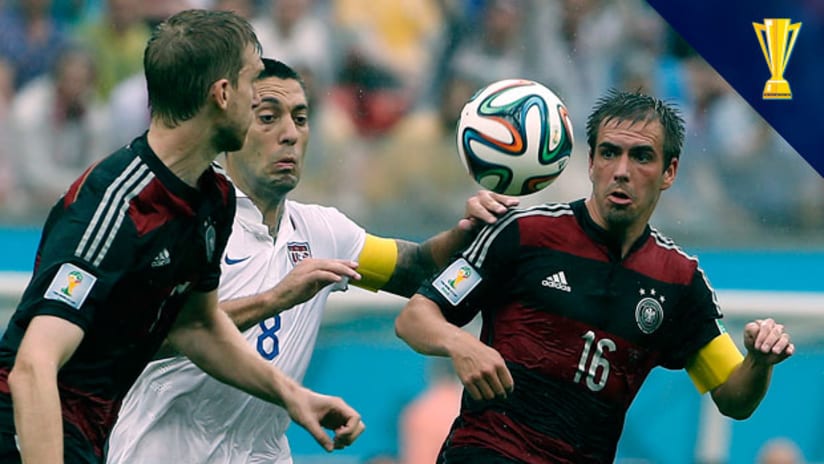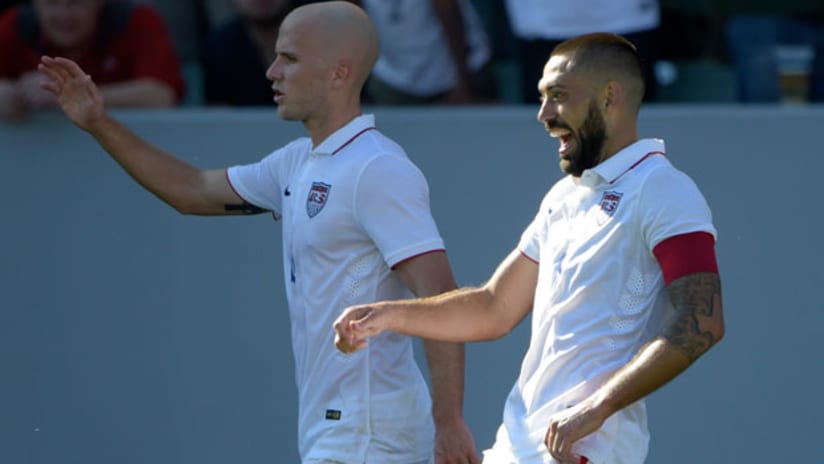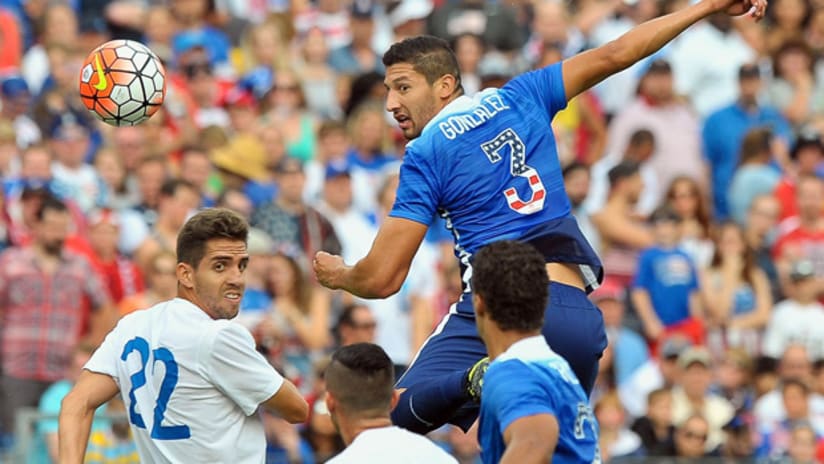Your team has put in their defensive work, winning the ball from their opponent and working it up the field to get in a dangerous position in the final third. Now comes the hard part: creating a chance. If things go right, your club will inevitably be faced with a choice: Do they pump in a hopeful cross or wait to play that killer through ball?
Which option is the most effective strategy? What can the relationship between the two variables (crosses and through balls, that is) tell us about each MLS team’s attacking tactics? Alex Oshansky explores those questions in the first installment of MLSsoccer.com’s data-driven series, Tempo-Free Soccer.
Soccer analyst/writer Michael Caley had an interesting article last summer that examined the relationship between shots created by crosses and those created by through balls. Perhaps intuitive, he found that shots created by through balls are converted at a much higher rate than those created by crosses.
This seems to hold true in MLS. Looking at the Opta data from the 2014 season, we can see that shots created by through balls are converted at a rate almost double that of those from crosses.
| 2014 MLS Chance Creation: Crosses vs. Through Balls | |||
|---|---|---|---|
| Shots | Goals | Conversion Rate | |
| Crosses | 1,526 | 201 | 13% |
| Through Balls | 362 | 81 | 22% |
This does not mean that good teams should completely ignore wide play. The most effective attacking teams usually find a balance between the two. The best measure of this is a team’s ratio of chances created by crosses to those created by through balls. The higher the number, the more reliant a team is on crosses to create chances. The lower the figure, the more reliant they are on through balls to carve out opportunities.
Last year’s MLS data, provided by Opta, is below:
Team |
Cross/Through Ball ratio |
|---|---|
Chivas USA |
10.2 |
San Jose Earthquakes |
7.7 |
Colorado Rapids |
7.5 |
Chicago Fire |
7.1 |
Houston Dynamo |
5.9 |
Philadelphia Union |
5.4 |
Toronto FC |
4.9 |
Columbus Crew SC |
4.4 |
Real Salt Lake |
4.1 |
Portland Timbers |
4.1 |
LA Galaxy |
4.1 |
DC United |
4.0 |
Sporting Kansas City |
4.0 |
New York Red Bulls |
3.8 |
Seattle Sounders |
3.3 |
FC Dallas |
3.2 |
New England Revolution |
3.1 |
Vancouver Whitecaps |
2.8 |
Montreal Impact |
1.8 |
Looking at the list, the tendency might be to view a high ratio as a bad thing, with many of the teams near the top of the table struggling to score goals last year. While tThe 10 playoff teams came from the 12 lowest ratios, the woeful Montreal Impact had the lowest ratio, so we cannot draw any definitive conclusions.
Nevertheless, looking at other leagues around the world, the more “attractive” teams tend to have low cross to through ball ratios. We’ve inserted a table below for the high/low-ratio teams from three major European leagues. Remember, the higher the number, the more reliant that team is on crosses.
| European Leagues Cross/Through Ball Ratio (High/Low) | ||
|---|---|---|
| English Premier League | Stoke City, 39.0 | Arsenal, 2.4 |
| Bundesliga | Stuttgart, 20.0 | Borussia Dortmund, 3.2 |
| La Liga | Levante, 40.5 | Barcelona, 2.2 |
We pretty much know why the stereotypically “attractive” teams typically have the lowest cross-to-through-ball ratios. They usually have the most creative playmakers capable of pulling off such cutting passes, and they often face a bunkering opponent that stacks the box with defenders, making crossing a somewhat futile exercise. The opposite usually holds true for “inferior, less attractive” teams.
Incidentally, there is much more parity in MLS than in Europe’s top circuits, so we do not see such wide spreads between the highest and lowest ratio teams.
Looking at 2015 MLS data, there are some interesting early results. Take all of this with a huge grain of salt, however – we don’t exactly have a large sample size, and teams have played a wide-ranging number of matches.
Here’s the 2015 data, with teams sorted by highest ratio to lowest ratio:
Team |
Chances Created from Crosses |
Chances Created from Through Balls |
Ratio |
|---|---|---|---|
Columbus Crew SC |
32 |
0 |
N/A |
Houston Dynamo |
11 |
0 |
N/A |
Portland Timbers |
22 |
1 |
22.0 |
San Jose Earthquakes |
16 |
1 |
16.0 |
DC United |
18 |
2 |
9.0 |
FC Dallas |
20 |
3 |
6.7 |
LA Galaxy |
26 |
4 |
6.5 |
Seattle Sounders |
19 |
3 |
6.3 |
Real Salt Lake |
12 |
2 |
6.0 |
Sporting Kansas City |
24 |
4 |
6.0 |
Philadelphia Union |
11 |
2 |
5.5 |
Colorado Rapids |
11 |
2 |
5.5 |
Orlando City SC |
13 |
3 |
4.3 |
Chicago Fire |
12 |
3 |
4.0 |
Montreal Impact |
4 |
1 |
4.0 |
New England Revolution |
12 |
4 |
3.0 |
Vancouver Whitecaps |
17 |
8 |
2.1 |
Toronto FC |
8 |
4 |
2.0 |
New York Red Bulls |
9 |
5 |
1.8 |
New York City FC |
7 |
5 |
1.4 |
The Vancouver Whitecaps have done an excellent job at creating chances both from wide play and with through balls, so it’s unsurprising to see good early results for them. In his first year at the helm of NYCFC, Jason Kreis’ team has almost completely eschewed crosses.
On the other end of the spectrum, Columbus Crew SC are taking full advantage of new aerial toy Kei Kamara. As for CCL finalists Montreal Impact, perhaps the less said – at least about their MLS play, anyway – the better.













